Get PeakVisor App
Sign In
Search by GPS coordinates
- Latitude
- ° ' ''
- Longitude
- ° ' ''
- Units of Length

Yes
Cancel
Share ×

Scan the QR code and open PeakVisor on your phone
❤ Wishlist ×
Choose
Delete
If you are very fond of mountains, taiga, forest paths and a never-ending sea of snow but for various reasons you can't go far or for a long time – go to the Borus Ridge in Siberia and pump yourself up during a perfect weekend retreat hike. Borus is not a single mountain but a ridge located in the south of the Krasnoyarsk Territory near the border with Khakassia in Russia. It is a perfect testbed for anyone’s abilities before dropping off for something more grandeur like Belukha Mount in the Altai or Elbrus in the Caucasus or Communism or Lenin Peaks in the Pamir. The Borus Ridge is part of the Western Sayans Range. It is located close to the village Cheremushki Sayanogorsk on the bank of the Yenisei River. The ridge is the heart, body and soul of the Shushensky Bor National Park.

Speaking of the composition, the Borus Ridge is distinguished by four major peaks standing close to each other: Cuban Revolutionaries Peak (aka Peak Durakov of which we shall speak later), Koshurnikov Peak, Maly (or Little) Borus and Poylova Peak (aka Bolshoi or Big Borus). All peaks are at an altitude of about or slightly above 2000 meters above sea level. The highest of them is Poylova Peak (2,318m). There is Cherkashina Peak a bit off the main line from those main four. There are three dwelling sites on the ridge: the Waterfall (Ryabinovy) at 1,200 m a.s.l., Pelekhovo used to be at 1,500 m (it has been burned to the ground) and the Banzai at 1,400 m a.s.l.
According to the Khakassian myths, the mountain is named after Borus or Burgus who rescued himself on a raft during the world flood, and then, 40 days later climbed the summit. That rescue raft is still supposedly perched on the top of Big Borus. Next to it is the town of Ymai-tas – the temple of the goddess Umai, where according to the Khakas mythology, the souls of children of the Sayan-Altai Turks are kept.
Another version of the name’s origin is it being formed from the initial letters of the names of the first sports conquerors of the mountain - Borisov and Rusanov.

On average, the climate is continental with hot summers and cold winters (the temperatures may range from -40C (-40F) to +40C (+104F). In the mountains the differences are not so staggering but it is not uncommon to have +30C (86F) in summer or -20C (-4F) in winter.
Smoothed relief prevails in the Borus. At the foot of the mountains, there are taiga forests, at the tops, there are cedar woods. In wintertime, the peaks are covered with snow, which depending on the weather, can lie until the end of summer or even the whole summer.
The ridge is interesting for its complex alpine vegetation, represented by all typical Siberian alpine species: alpine primroses and violets, golden and Dahurian rhododendrons, anemones and saxifrages.
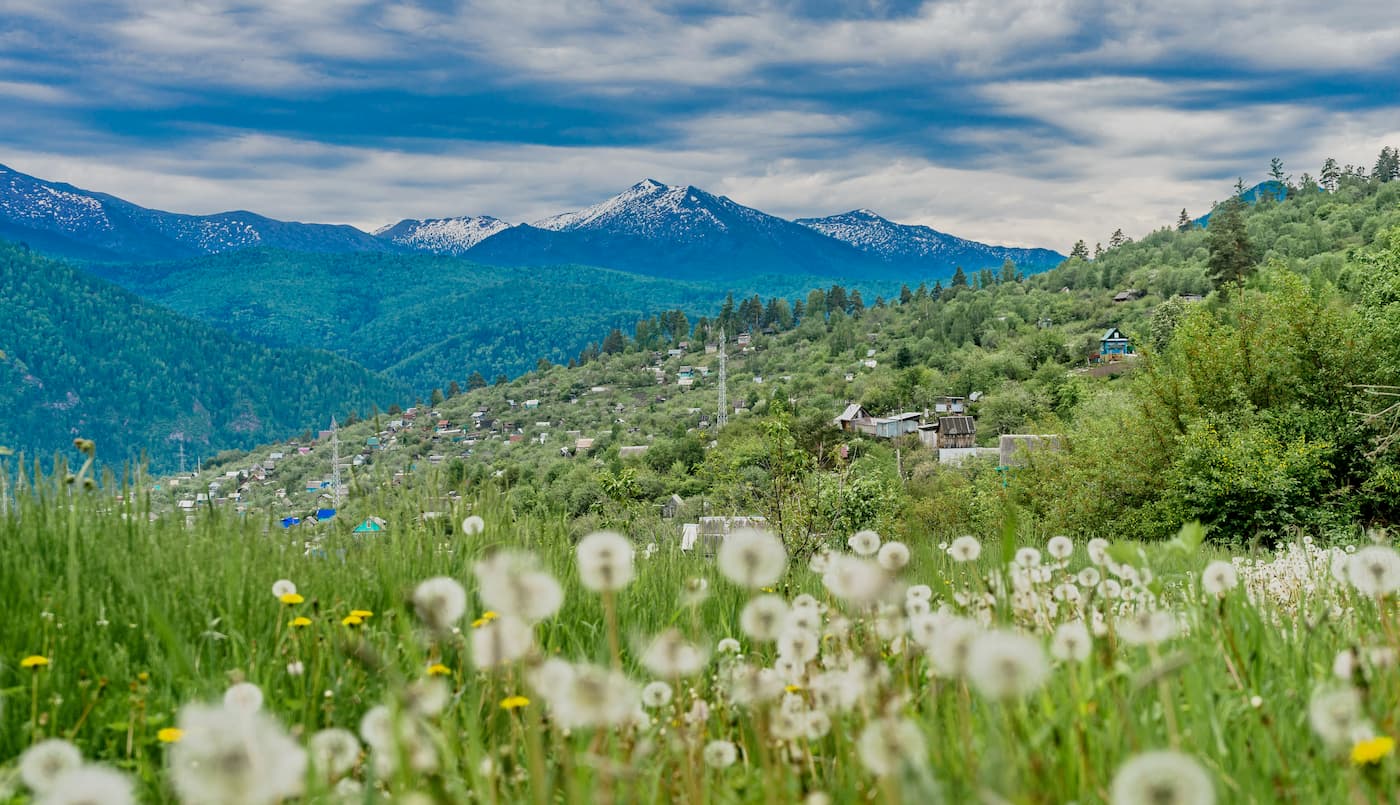
Fans of outdoor activities prefer Borus because of mountain waterfalls, lakes with ice-cold water, breathtaking panoramas and lack of insects, which is quite a phenomenon for Siberia.
The place is equally attractive to experienced tourists and beginners who want to get acquainted with the world of mountains. The former can live in their tents with the mountains towering over them, whereas the second may stay in a cozy house on the cordon of the Shushensky Bor National Park. The kids love tobogganing or riding down the slopes on snow saucers, the Borus is quite popular for family trips and you can also bring your dog.
From the top of the Borus Ridge, you can see all the surrounding areas: the ski resort – Gladenkaya mountain in the west, steppe expanses in the north, and the infinite sparseness of the Sayan Mountains in the south. In clear weather, the Yergaki Nature Park in the west will open to the eye. The distance from the Borus is 130 km as the crow flies. You can see the cities of Sayanogorsk and Main as well and the famous neighbour of the Borus – the Sayano-Shushenskaya hydroelectric power plant, as well as its huge reservoir. By the way, you can drop to this plant for an excursion. The plant suffered from a massive catastrophe on August 17, 2009 which killed 75 and injured 13 people.
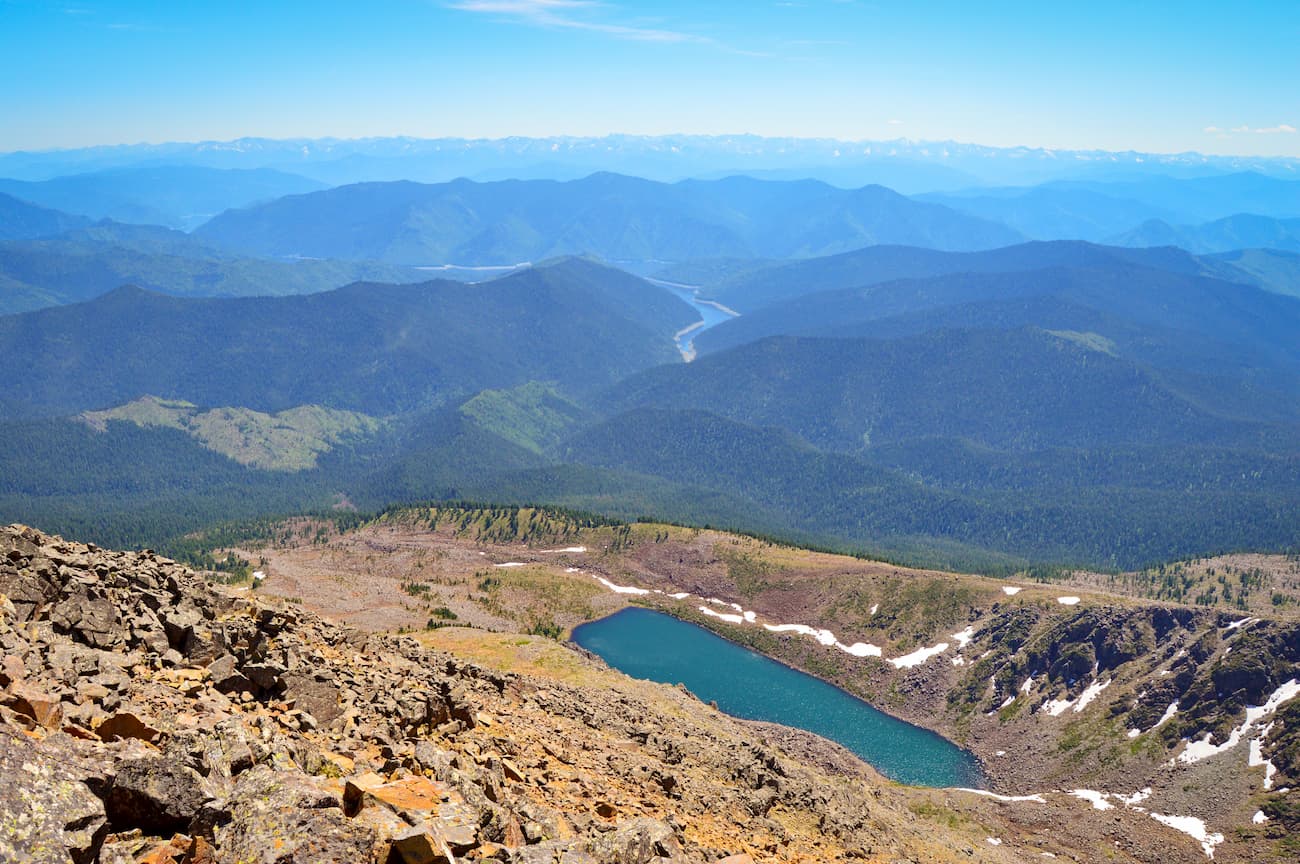
Most tourists travel to the Borus Ridge for 3 days, they arrive from Krasnoyarsk or Sayanogorsk to the village of Cheryomushki.
If you come by car, cross the only bridge in the village and just after the bridge turn right, go farther on the road, which itself will begin to turn right. It is necessary to go along this road until the turn to the left, where there will be a sign Shushensky Bor National Park. If you're going by bus, it's better to leave Krasnoyarsk around midnight (at the beginning of the first of the three days) and change to buses number 2 or number 2a in Sayanogorsk to Cheryomushki, and go to the final stop, which is just right at the bridge.
So, you turn at the sign Shushensky Bor National Park. In 200-300 meters you will see a small hotel which is actually the Visitor Centre of the national park, the passage through the park is free but there is a road barrier. You’ll have to find an administrator who will raise the barrier.
You can stay overnight at the Visitor Centre hotel. There are comfortable rooms, a warm toilet and a bathroom, but it will be much more expensive and will make your walks longer for a couple of kilometers back and forth. A viable option is to go farther (about 2.6 km on an almost flat road) to the cordon Talovsky Log, which is more picturesque, though a little more severe. There is a paid parking lot (something like 50 cents per day) and a free parking lot along the road, but that is often occupied.
You can rent a cabin for 2/4/6 people. Toilets are outside the cabins, water is taken from the nearest spring, ask the park rangers where. But you have electricity and a sauna which makes up for rather spartan-like dwelling. The firewood is free and available at the woodstack.

Once you get to the cordon at around 2pm, quickly unpack your things and set out for the viewing platform (aka vidovka). Take your thermos, some snack, a head lamp and maybe an extra sweatshirt with you. The viewing platform is 4.7km away with a relatively steep trail to it, a physically fit man can get there in approximately 1.5 hours. Take the wide road from the cordon which will split in two paths in 2.5 km. You take the left one. There are many paths branching out, but you should always follow the wide main trail.
The viewing platform is a metal etower with kind of floors to which you can climb via stairs. Next to it there is a bivouac unheated house where you can eat, hide from the wind and in extreme cases even spend the night but without a sleeping bag it will be very cold. There is also a street toilet and a fire pit.
In general, there are bivouacs all along the road to the Pelekhov Pass. The roofed and walled shelter is available only near the viewing platform, in other places you will find open tables with benches under a roof. Almost always near those tables you will find a fire pit and some firewood. They are specially prepared by the park rangers, so that in extreme cases, people can stay at such bivouacs, get warm and spend the night if it is impossible to go farther.
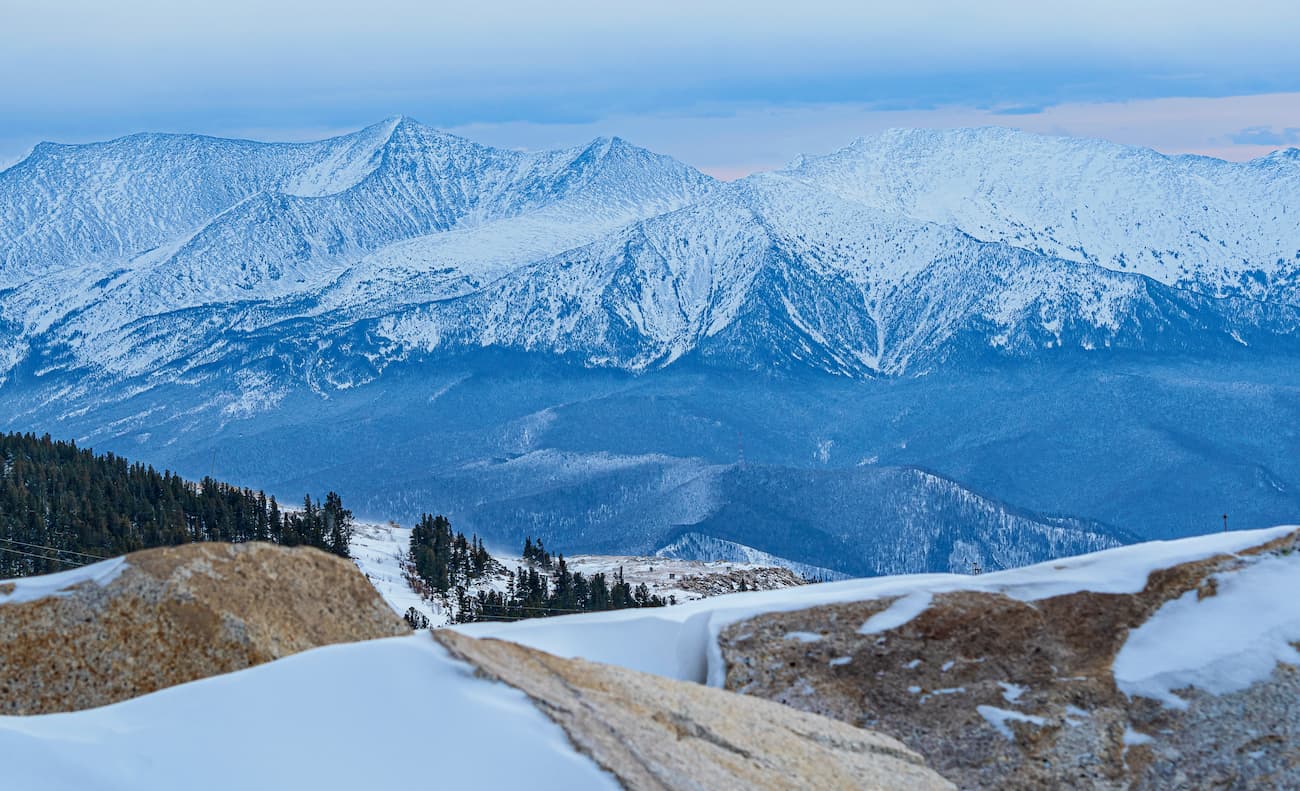
Despite the fact that Big Borus (Poylova Peak) is only 11 km from the cordon, it is better to set off no later than 6 am, 7 am would be cutting it a bit fine unless you can move at a good pace with a backpack weighing 4-6 kg up the mountain. There are very few descents and relatively gentle sections to the top.
There is always a well-trodden trail to the top of Big Borus because the residents of Cheryomushky and Sayanogorsk regularly walk to the mountain or to the Pelekhov Pass. Even heavy night snowfall is unlikely to completely obscure the trail. In addition, along the trail on the trees, there are colored markings leading to the Pelekhov Pass. The route to the top from the cordon is the same as to the viewing platform but at the first fork go straight, not left. There is an infoboard with the scheme of the route to Big Borus at that fork.
Go straight and up the path that goes behind the infoboard. In about 150-200 meters there will be the second gazebo. After about 300 meters there will be a next gazebo with a fork and a sign: to the right is to the waterfall (it is frozen until May), to the left is to the Pelekhov Pass and the main peak. Here you can have some rest for a few minutes. You can have a rest wherever you want, but the more stops, the longer the way up. If you are tired, it is better to slow down, but still go.
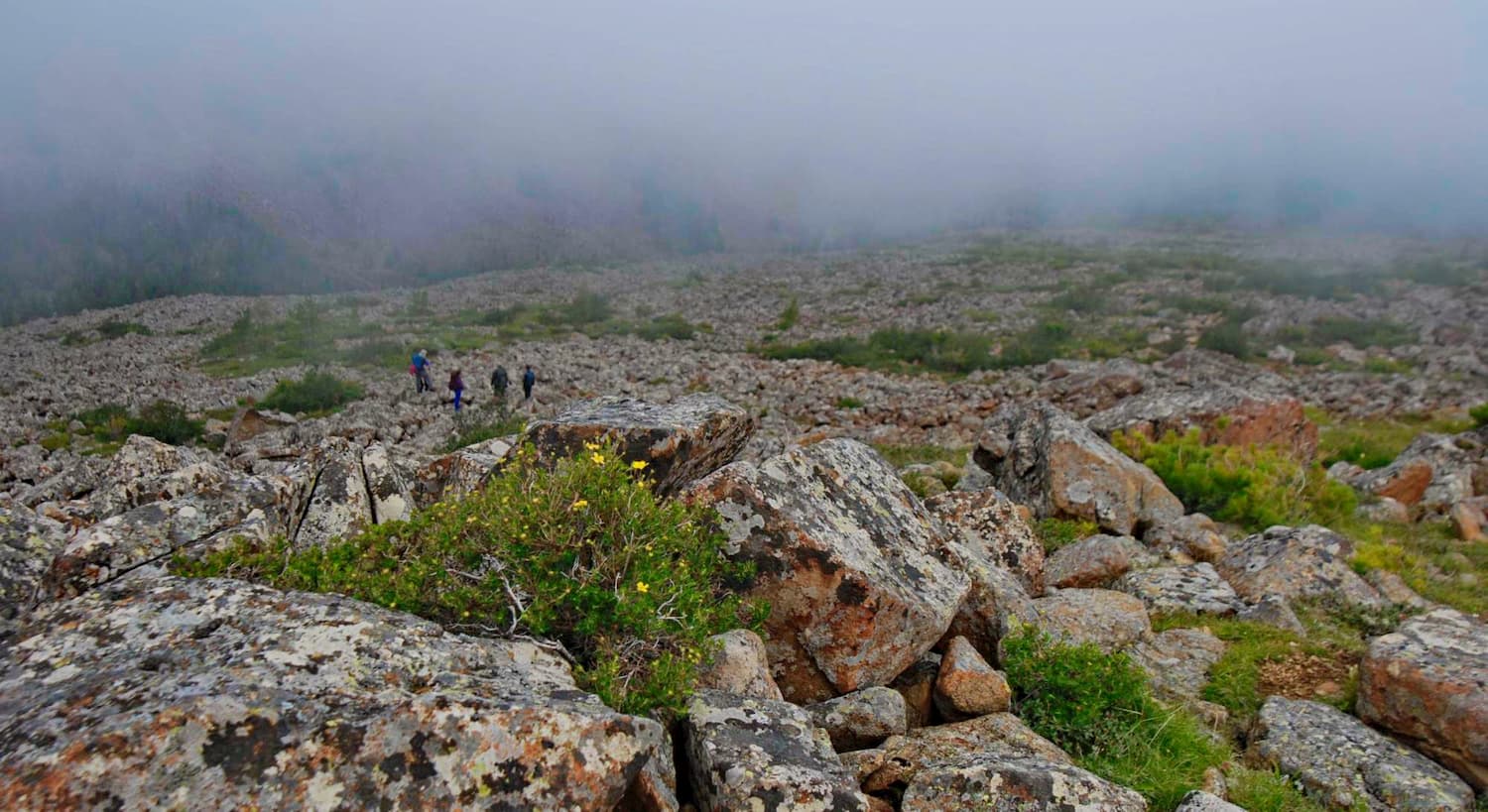
The most difficult passage will be the last 150-200 meters to the Pelekhov Pass. The path is steep but still walkable, just watch your step and pace yourself. The reward will be a great panorama of the Yenisei River rolling gently beneath, the hills lying at your feet, and if you look closer, you can also see at the viewing platform in the distance.
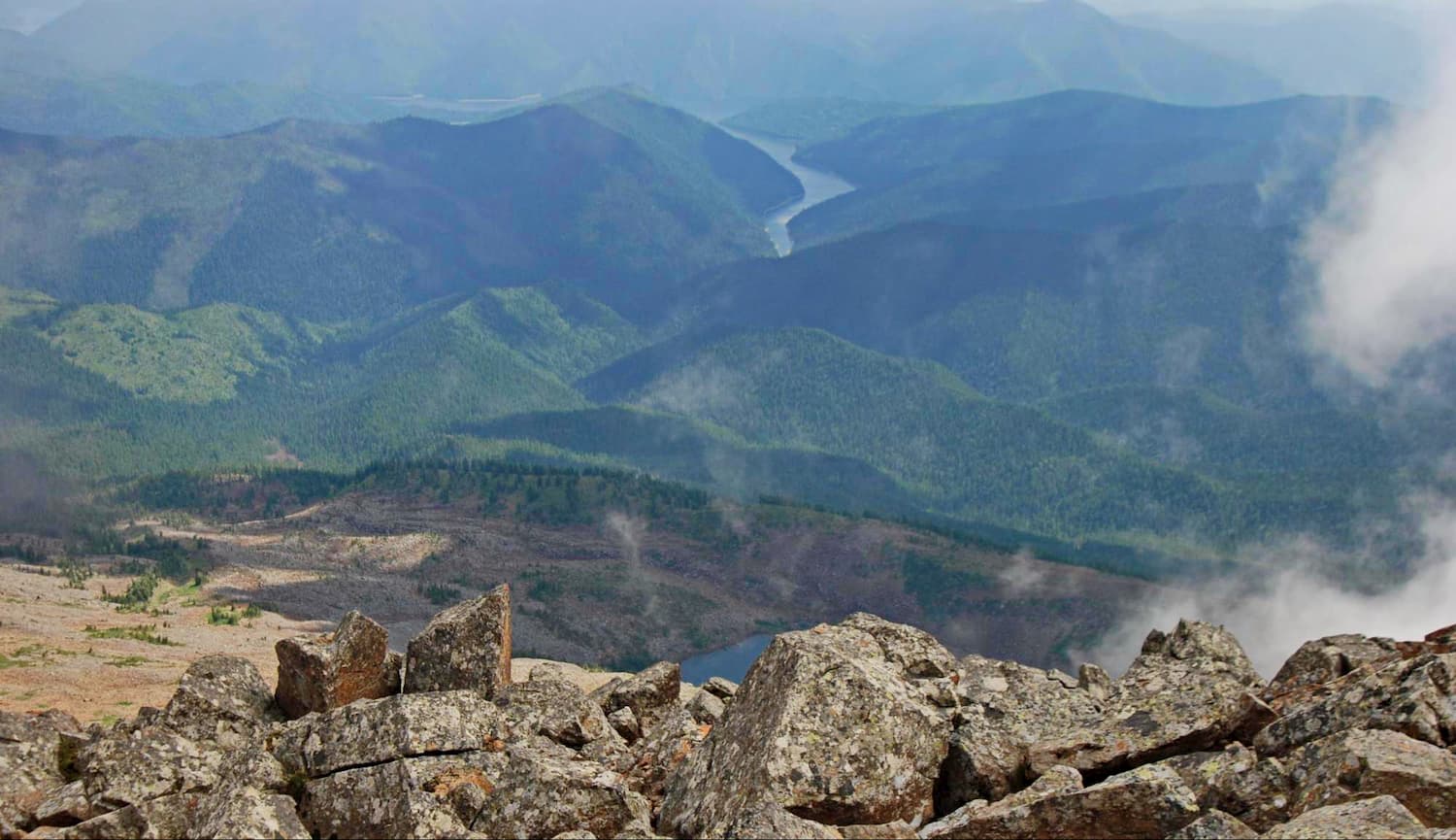
If you have reached the pass at 8-9 am, it is a very good result. Hikers usually take a five here and continue on the path leading to the right towards the summits of Little and Big Borus. The trail goes along the last forest area before a sparse loose rock plateau (aka a rock river). This lap is climbing relatively steeply but it takes you to the crest of the Little Borus. The plateau itself is not difficult but in winter, mind the possibility of sinking in the snow, which is the most depressing because it takes a lot of effort to get your foot out of the snow. Pull your foot carefully and take your time so that it does not get stuck in the stones. In summertime, you will come across plenty of patches with stone placers, make sure your shoes are sturdy and if you take a dog, think whether it can cover those patches without injuring the paws.
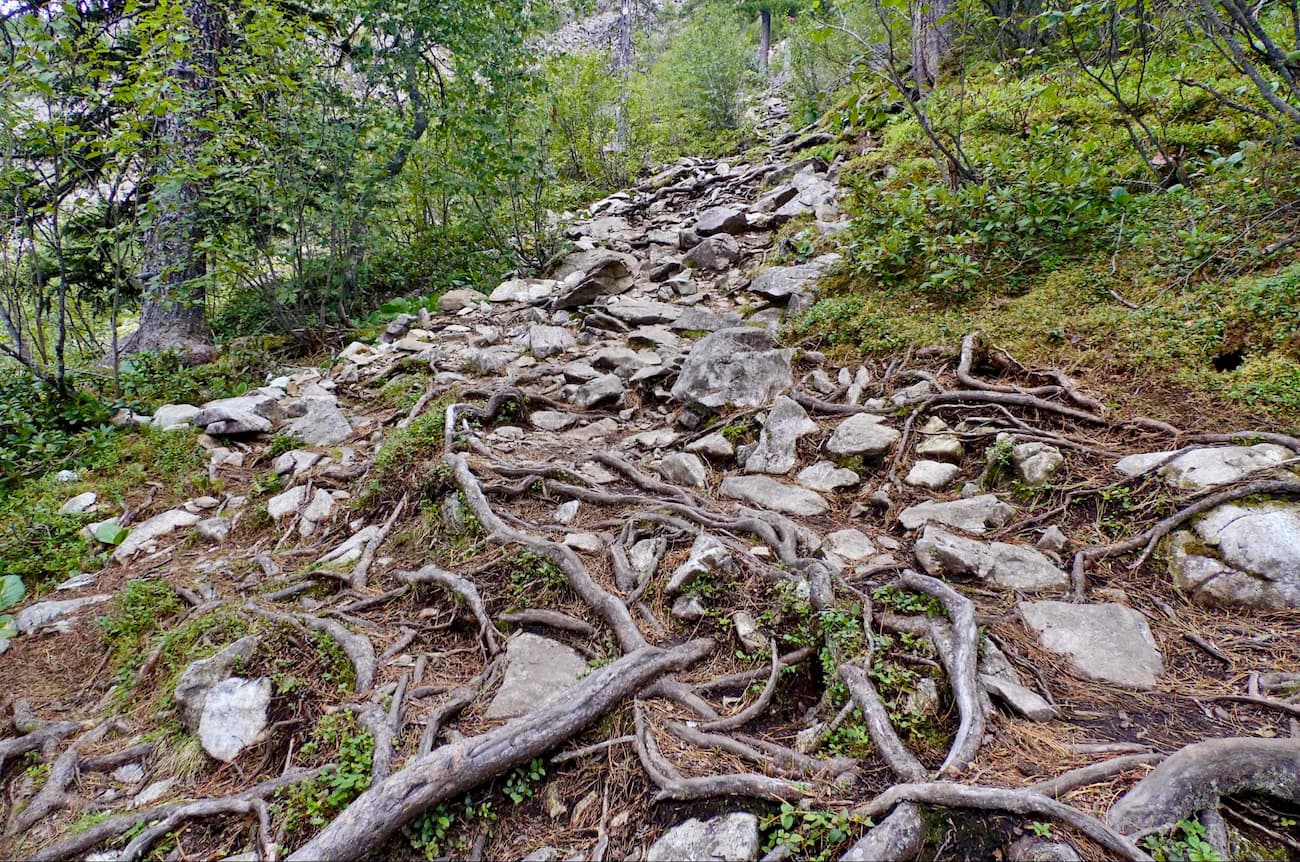
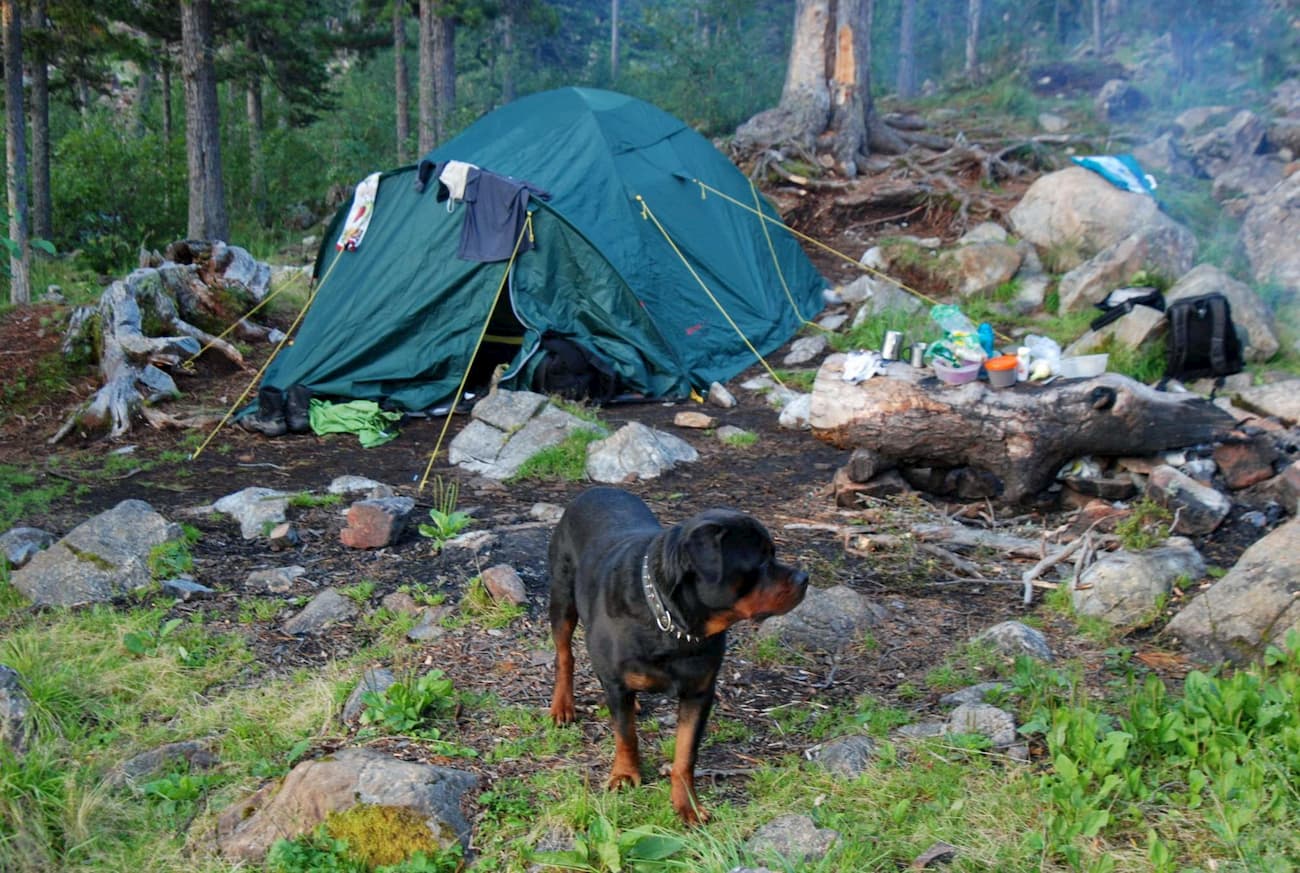
Climbing Little Borus is generally simple and does not require ropes or special mountaineering equipment. The trail goes approximately along the crest of the ridge, sometimes departing from it to the right for no more than 3-4 meters, yet caution never harmed nobody!
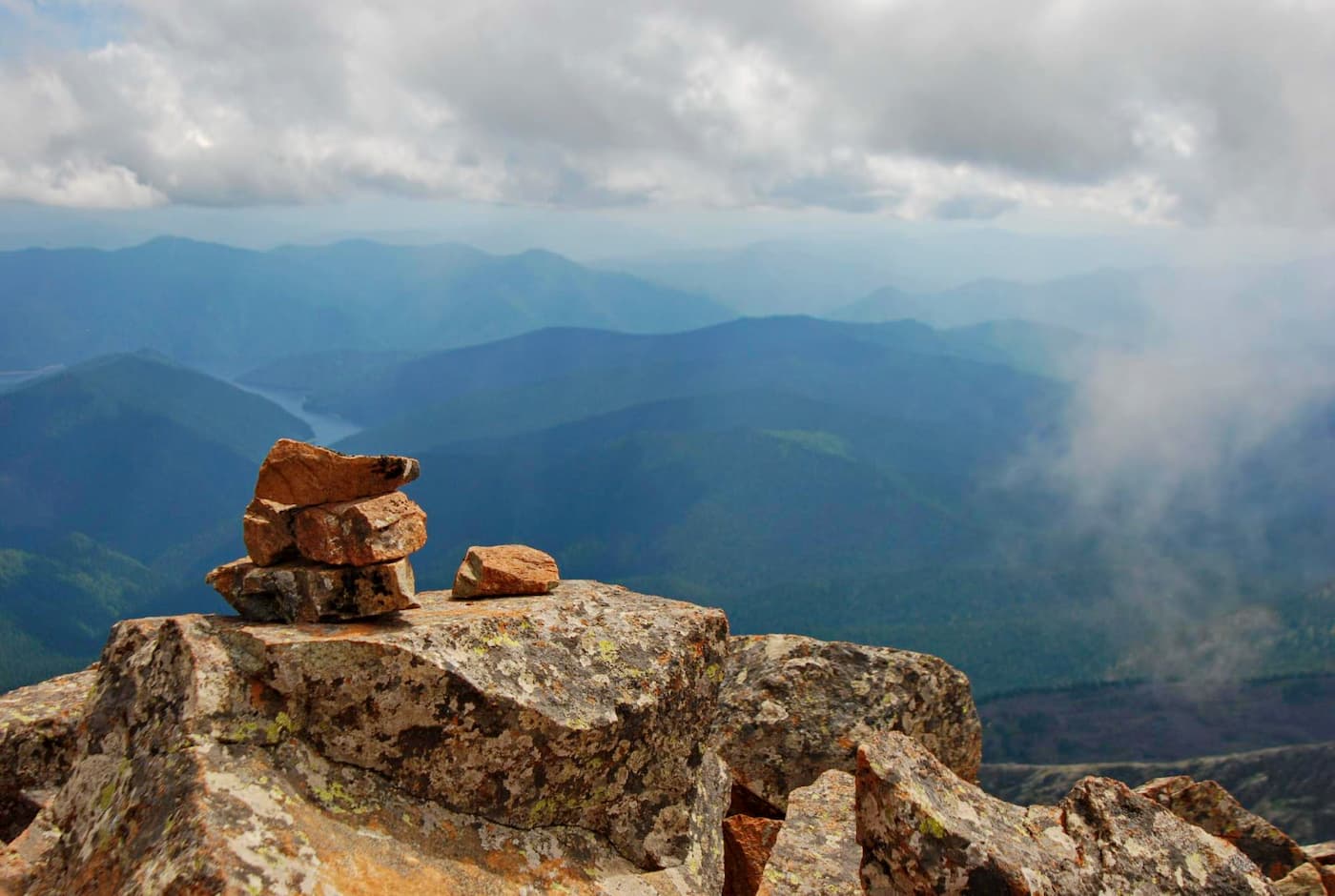
While hiking to Little Borus, it will seem a couple of times that you’ve reached the top. However, this is a deceptive impression occurring quite often in the mountains, in fact, it is only a decoy ledge, and the top lies farther. The summit of Little Borus is usually marked by some human memorabilia, such as ski sticks.
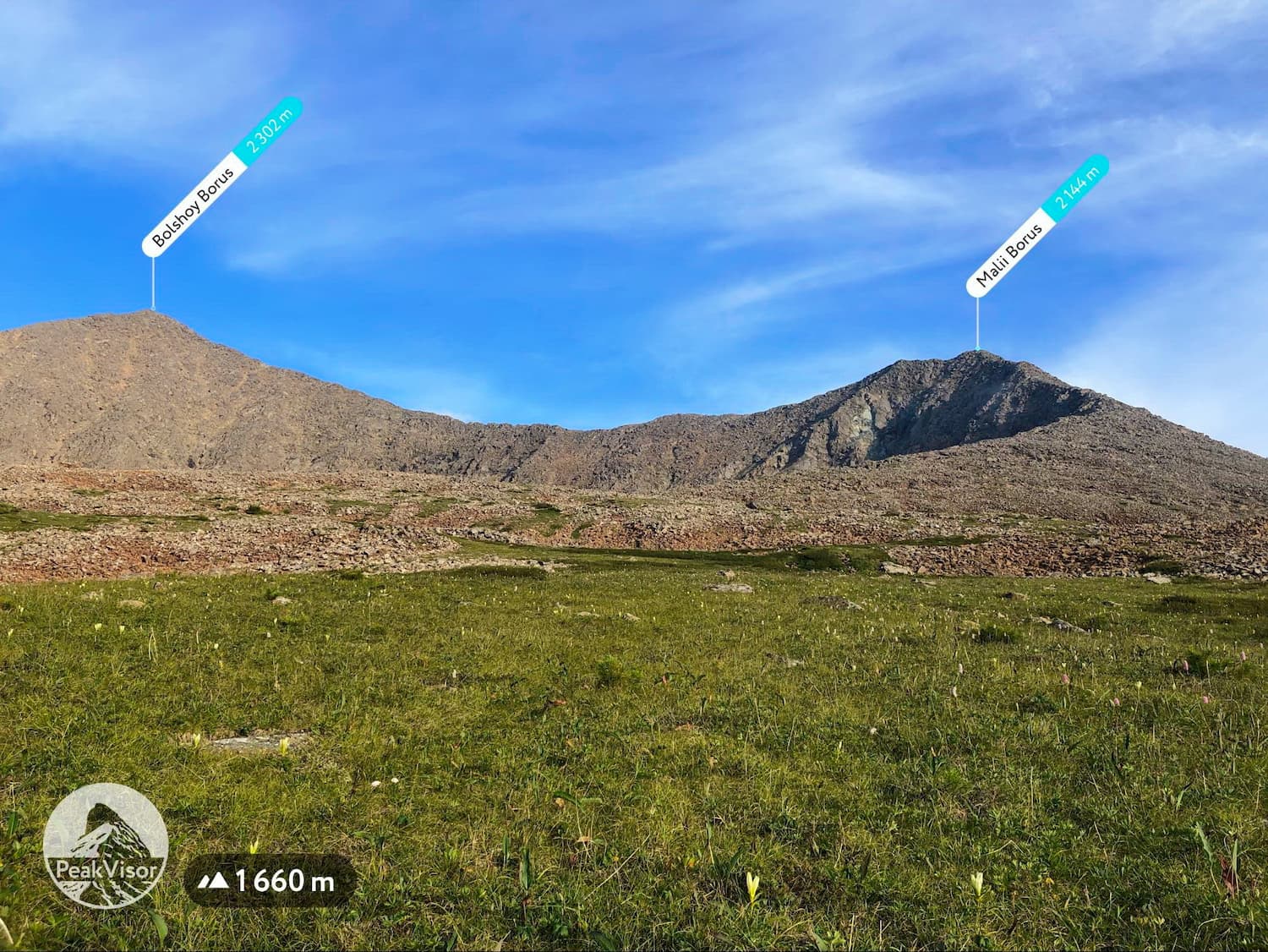
Once you are on top of Little Borus, take a breather and enjoy the panorama. Big Borus is 1.5 hours away. The trail also follows the crest of the ridge. Firstly, you need to go down 100 meters, and then begins a gradual ascent which is not more difficult than the one to Little Borus. Your estimated time to arrive at Big Borus should be no later than 3pm. If you get there earlier, do not hurry, walk from one edge of the peak to the other, find the info boards and signs on the top, look at the slopes, and feel the beautiful world around you. Enjoy! After all, this is what you’ve come for.

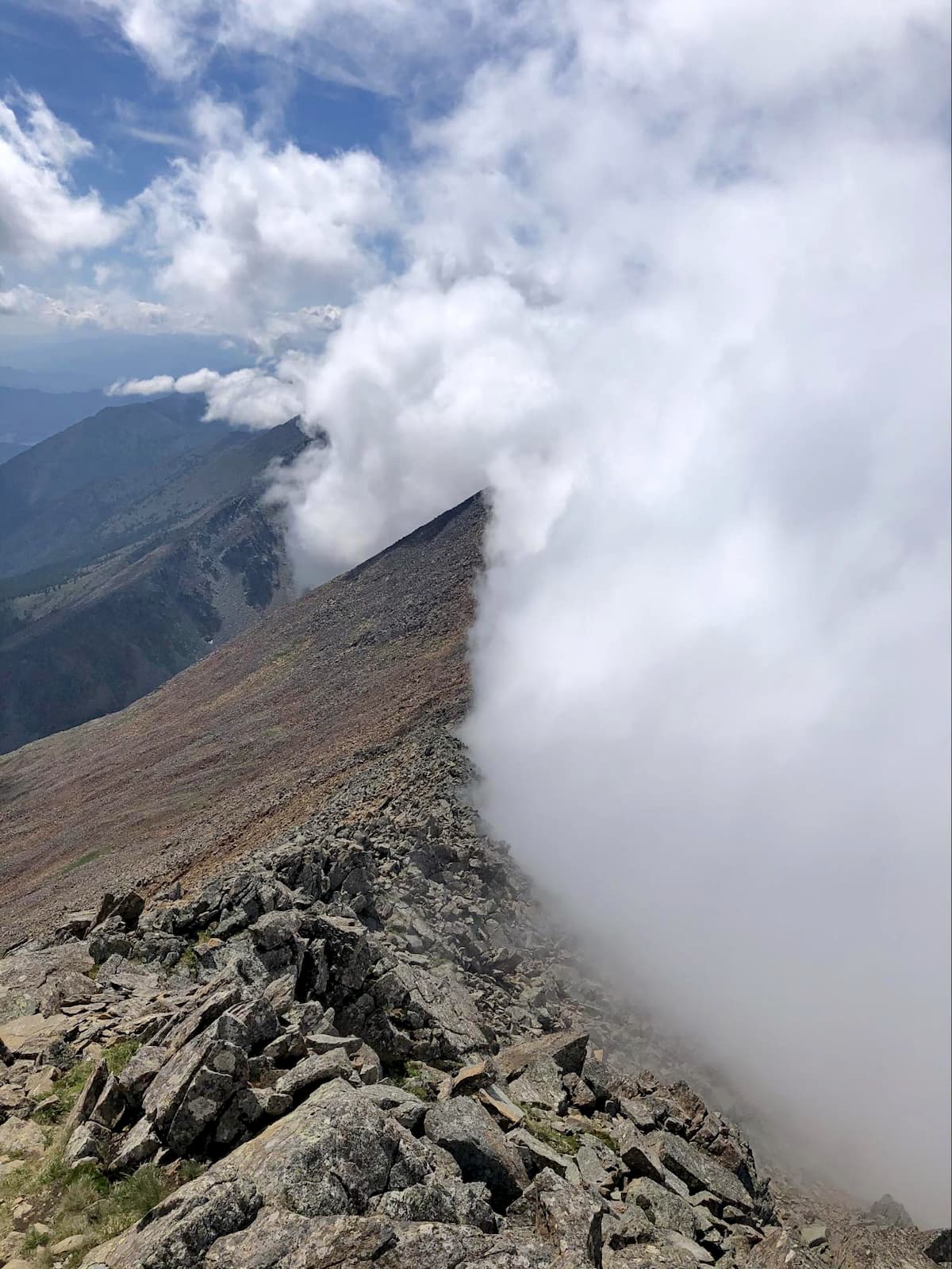
Leaving the top, if possible, take someone else's garbage if any and in no case leave yours. Return trip to the cordon goes along the same route. If everything is good and the weather is pleasant, you will be at the cordon at 8 or 9 pm. Keep in mind that in some areas, the descent will be a little harder than ascent.
When you go from Little Borus to Big Borus, you will see Fools’ Peak aka Peak Durakov or Cuban Revolutionaries Peak on your left. You can opt for a route to Big Borus via that peak, but the trail will be much more complicated. That is why, apparently, the peak got its name because of the unwise guys, and we don’t mean the much respected Cuban Revolutionaries here.
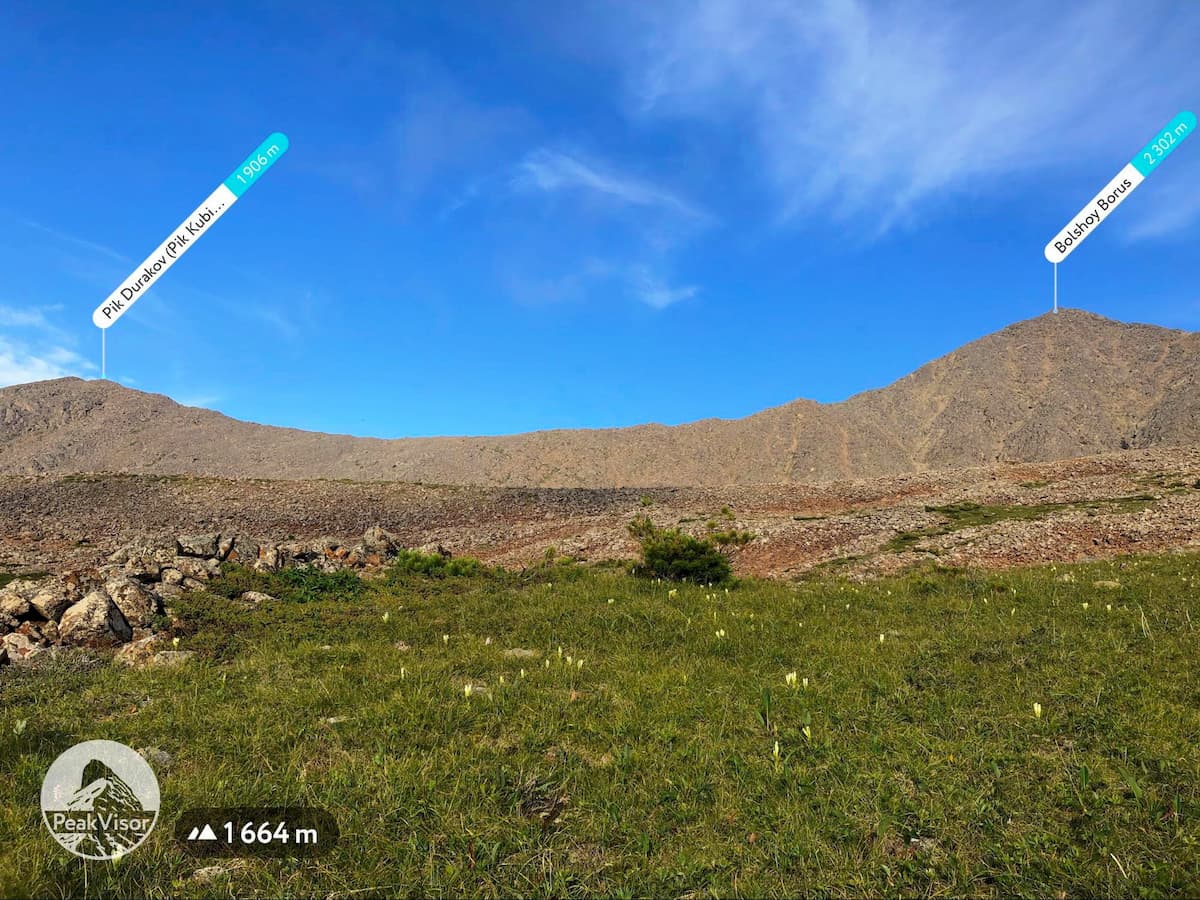
And when you feel that you know the area well, you have suitable equipment and the right physical shape, you can try to go to the neighboring peaks: Koshurnikov Peak and Cuban Revolutionaries Peak (Peak Durakov). From the last peak you can also climb Big Borus and then go down the classic route through Little Borus.
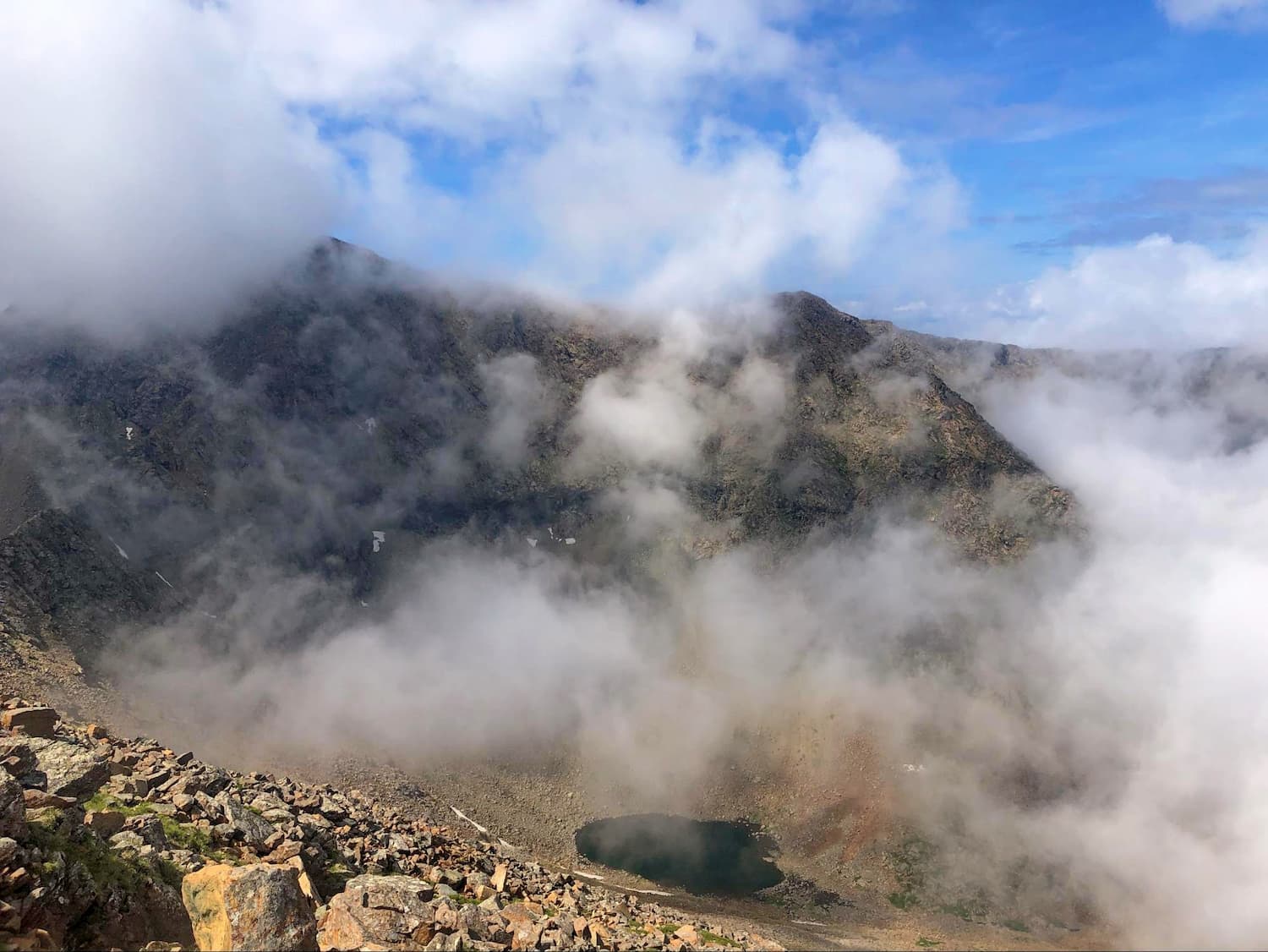
Depending on the season, dress as if you are going on a camping weekend. But there are nuances. In winter (October - May), the shoes should be well-worn and don’t forget some warm socks as well as leggings or long johns so that no snow will get into your boots. Mittens will always be winning over gloves. A balaclava will render additional protection for face and head if necessary. It makes sense to wear some thermal underwear. And don’t be shy to have layers of clothes on as it might be freezing at night in the mountains. Summer wear is easier to handle, but some warm clothing is also essential as the nights might be cold.
You do not need any mountaineering equipment to climb the classic route to the main summit of the Borus. If you feel unsure about long walks, take trekking sticks. A headlight with a spare set of batteries, matches and a lighter are mandatory. What’s more, throw in some sunscreen and sunglasses as the sun in Siberia may be vicious if you go over 2000 m a.s.l. A first-aid kid with painkillers, anti-cold drugs, antidiarrhoeal medicine as well as those for treating upset stomach abrasions and simple wounds would be necessary too.
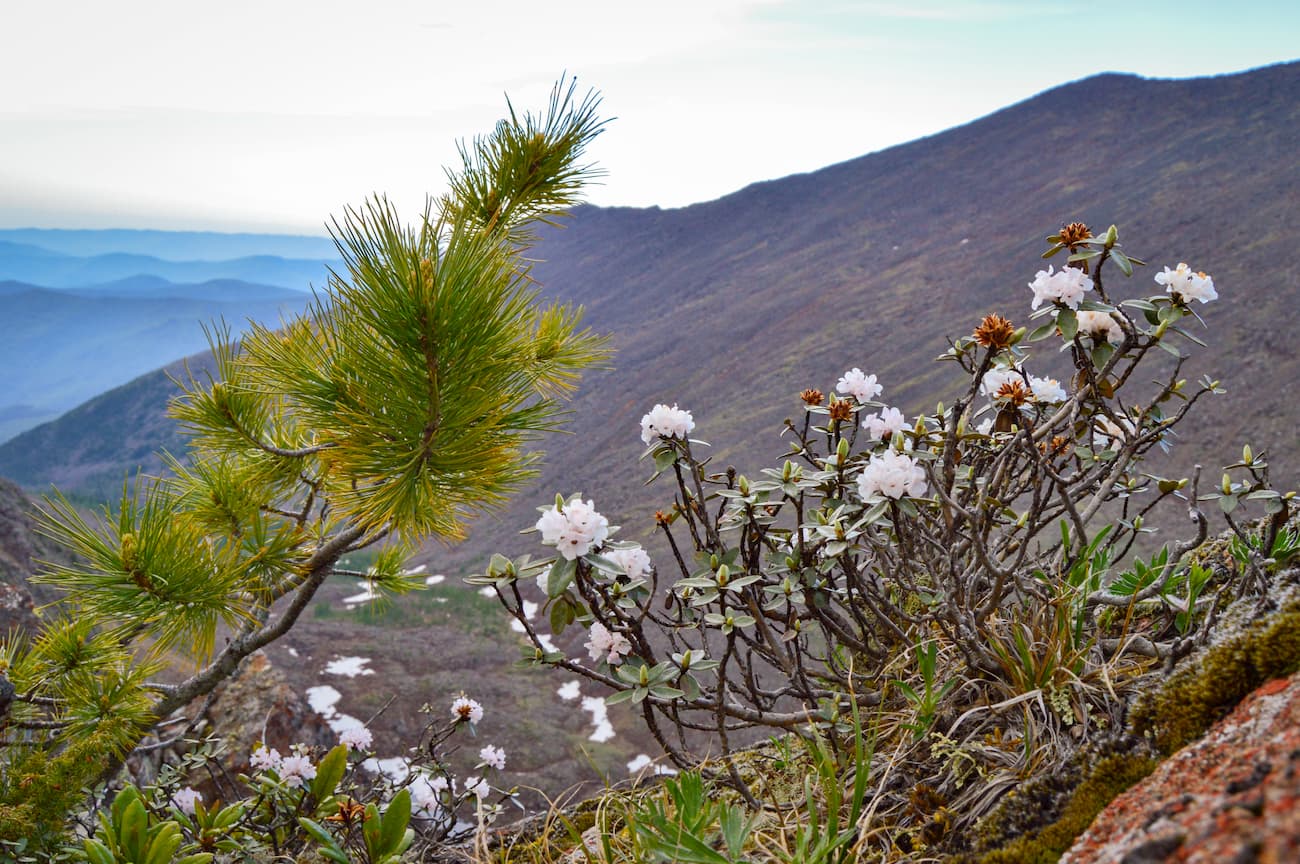
The Borus is not the highest by any mountaineering standards but it is still a real ridge with all the typical dangers (except for the glaciers).
There is a mobile connection on the mountain ridge, but not everywhere. For example, you can catch a good signal on the Pelekhov Pass. Mind you that even in good weather it will take rescuers several hours to reach you after receiving a signal for help from you. It is important to register in the local Ministry of Emergency Situations or at least on the cordon. You should inform the rangers about the time of your arrival on the mountain and the expected time of return. When you return, do not forget to notify them as well, otherwise, they may start looking for you!
You can go to the ridge all year round, but winter time is probably most stunning as it offers superb sparkling white panoramas. If you go early in the morning, the snow is quite dense, so you lose your footing very rarely. In the afternoon, when you return to the camping site, you start to fall more often, but compared to May when the snow goes softer, you can say that you follow a well pressed trail.
Go to Krasnoyarsk by plane, train or car, then take a bus from the bus station in Shushensky District. You can opt for the train to Abakan, get off at the station of the same name, and take a bus to Cheryomushki. The most comfortable option though is a transfer provided by a travel agency, they will meet you at the place of arrival in Krasnoyarsk and deliver you up to the Borus Ridge.
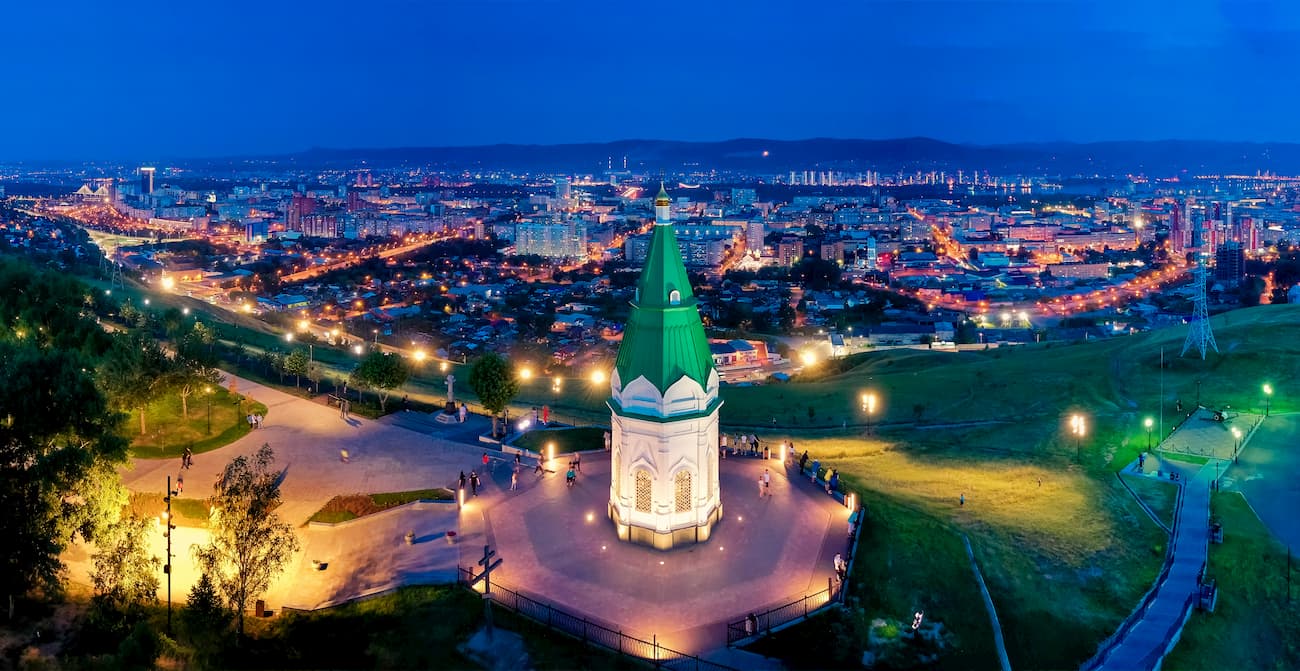
There are two big neighbours of the Shushensky Bor Natural park where the Borus Ridge is located, i.e. the Sayano-Shushensky State Biosphere Reserve and the Yergaki Nature Park. The former was established in the 1970s to compensate for the harm caused by creating the Sayano-Shushenskaya hydroelectric power plant. The latter is famous for its bizarre rocks shaped as fingers and well-preserved wildlife. You can see brown bears, lynxes, wolverines, red deer, roes, minks, boars and even the Red Book animals: Siberian musk deer, snow leopard, red wolf and manuls.
One more natural park, Tunkinsky, is located much farther away, but is worth a visit.
Tell us about your Siberian travels and adventures at peakvisor@routes.tips, we appreciate your feedback.
Explore Shushensky Bor National Park with the PeakVisor 3D Map and identify its summits.








